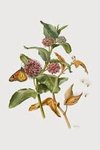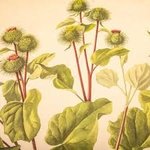When you think medicine these days, you think of the pharmacy, doctor's office or your medicine cabinet, right? But what if you were on a weekend trip, camping in the Adirondacks and you forgot to …
This item is available in full to subscribers.
Please log in to continue |



When you think medicine these days, you think of the pharmacy, doctor's office or your medicine cabinet, right? But what if you were on a weekend trip, camping in the Adirondacks and you forgot to pack your neosporin, afterbite or pepto bismol?
Well hundreds of years ago, none of the modern medicines we have today were around, so Native Americans and early colonists had to use what was around them. Like ancient Chinese remedies, Native Americans had long been using plant remedies to heal many common ailments.
Many European explorers and early colonists had some basic knowledge of medicinal plants but the Native Americans knew the plants that grew around them much better. Of course like everything else, as newer medicines became available over the years, these old remedies have been almost forgotten. But just because something is newer, doesn't always mean it's better.
Over the next few weeks, I will be writing about some of the Native American remedies that can be found growing around our area every summer. The first plant that I want to talk about is one that I have plenty of experience with and that is Jewelweed.
Jewelweed grows everywhere around our area and it is a great treatment for bug bites, bee stings and poison ivy. It is also the easiest plant remedy to use as all you need to do is break a stem and rub the sap on the affected area. We sell a Jewelweed soap for poison ivy at the store, which most people keep in their camping and travel bags, for those adventures out of the area. But Jewelweed isn't just for poison ivy, it is great for bites and stings too. Jewelweed works immediately to alleviate the pain from bites or stings just as well as commercially available Afterbite. It really is a wonder plant.
If you get some scrapes and abrasions after a woodland hike and you don't have your neosporin with you, here are some common native American remedies.
Common milkweed with its white milky sap will help heal scrapes and sores and can even help in removing warts and corns. You can make a “tea” from the leaves that you can use as a wash for cuts and scrapes.
To make the tea, take a handful of leaves and steep them in a pint of hot water for 10 minutes. This tea is not for drinking, it is for cleaning wounds of dirt and debris, and will help in the healing process. If you don't have milkweed around, how about some burdock.
Burdock, that weed with the round seed pods that get matted in your dogs fur in the summer as it sticks with velcro like hooks. But burdock has a medicinal property as well.
The large leaves of the burdock plant can be ground up and turned into a poultice that you can put on wounds to help in healing when commercial remedies are not available.
Some of these remedies are better than commercial products and over the next few weeks I will highlight some medicinal plant knowledge that has been lost over the last 500 years in North America.
Comments
No comments on this item Please log in to comment by clicking here